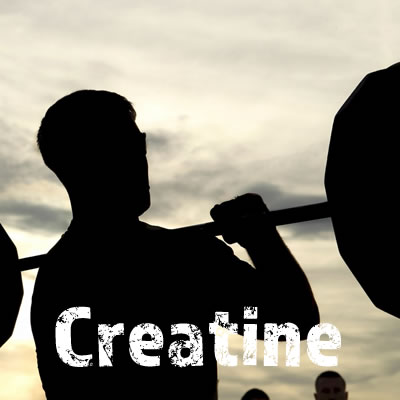Creatine
Creatine is an important supplement for improving performance in the sport, where it it can increase muscle mass, strength and exercise performance. It has hundreds of scientific studies that point to its safety and effectiveness.
Creatine is a substance made from amino acids that is found naturally in muscle cells. The body can produce it out of the amino acids glycine, methionine and arginine, plus 3 enzymes. The entire glycine molecule is consumed in creatine synthesis but only the methyl and amidino groups, respectively, from methionine and arginine. Creatine helps your muscles produce energy during heavy lifting or high-intensity exercise. Homocysteine, a methionine metabolite, is thought to to be a risk factor for cardiovascular diseases, so the conversion to creatine in the body is a vital one.

Your body's creatine store is influenced by meat intake, exercise, muscle mass and your hormonal health. Most of the body's creatine is stored in muscles as phosphocreatine. This is a phosphorylated creatine molecule that serves as a rapid reserve of high-energy phosphates in our muscles and the brain to recycle ATP. Creatine supplementation has the ability to increase muscle stores of phosphocreatine, potentially increasing the muscle’s ability to resynthesize ATP from ADP to meet increased energy demands. Creatine in Foods. Creatine is found in red meat, pork, poultry and fish. There is less in dairy, eggs, and shellfish. Creatine is mostly in muscle meat and not organ meat. We have around 100-150g of creatine in our body (depending upon your size and muscle mass). Creatinine loss averages approximately 2 g for 70 kg males in the 20 to 39 year age group. Creatinine loss is lower in females and in older age groups because of lower muscle mass. Approximately half of this creatine lost to creatinine can be replaced, in omnivorous eaters, by creatine from food.
Muscle gain and weight loss?
Creatine will help you gain muscle because it allows you to do more reps and work harder. So creatine is an indirect fat burner. You have to be willing to push to the next level to achieve greater results than just exercising. The slight downside is that it has a tendency to add a little weight via water retention, but the good news is that the water is retained in your muscle rather than in other parts of the body.
- Your physique will improve.
- Weight will increase slightly due to water retention.
- You will gain muscle and lose fat. Muscle weighs more than fat but is less dense (muscle is 1.1Kg/litre, fat is 0.9Kg/litre). So you will look leaner.
If you plan to lift more and work a lot harder, then creatine is probably for you. Ancient meat heavy diets provided loads of creatine, but you would probably need to eat 0.5-1Kg of meat a day to be fully loaded with creatine.
Our energy system is based on ATP
ATP is consumed by energy-requiring processes within our cells. ATP is made by energy-releasing processes within our cells. The are 3 ways the body can produce ATP (the cellular energy source):
- Aerobic (with oxygen): This produces ATP slowly and uses glucose or fat as a fuel. Aerobic respiration is far more energy-efficient than anaerobic respiration. Aerobic processes produce up to 38 ATP per glucose. Perfect for long duration exercise.
- Anaerobic (without oxygen): This produces ATP quickly and uses glucose as fuel. Anaerobic processes yield only 2 ATP per glucose. Perfect for short duration exercise of 1 or 2 minutes.
- Phosphagenic: Phosphagens are high-energy phosphate compounds, chiefly found in your muscular tissue. This is used for explosive movements such as sprinting or lifting reps of heavy weights. 10 seconds of energy.
Creatine + ATP ⇌ creatine phosphate + ADP (this reaction is reversible and is magnesium dependent).

